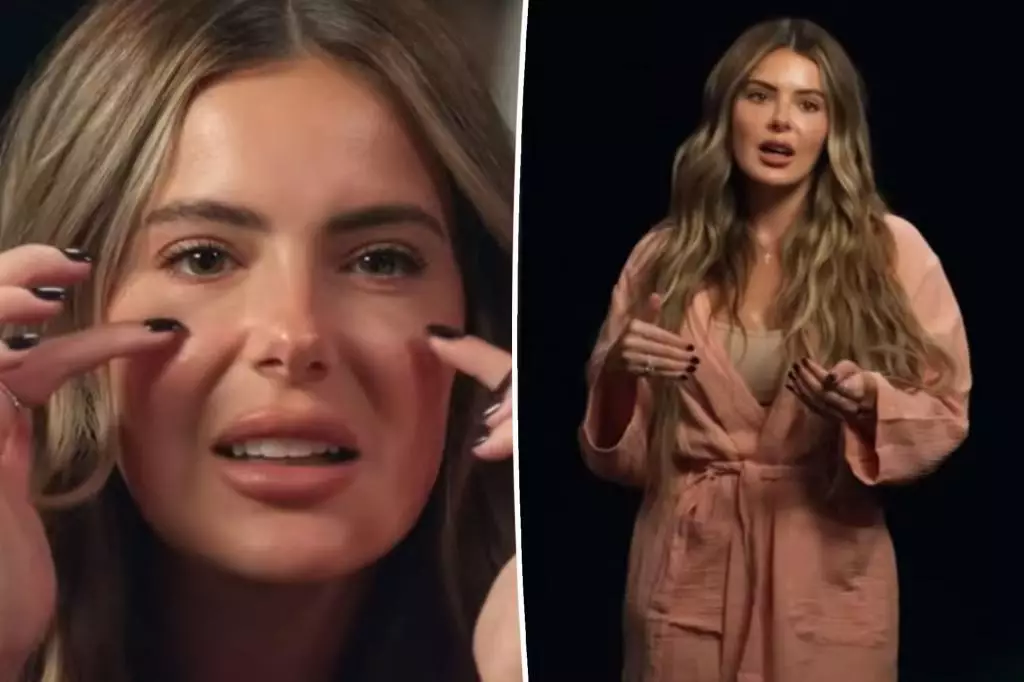In recent years, the glamorization of cosmetic procedures, especially among young influencers and celebrities, has created an environment where aging gracefully seems to be replaced by relentless pursuit of perfection. Brielle Biermann’s honest confession about her early use of fillers offers a stark reminder of how societal pressures, familial influence, and social media validation can push individuals into decisions they later regret. Her narrative highlights that the desire for a certain aesthetic, when adopted at a young age, can spiral into unintended consequences—both physically and emotionally.
The culture surrounding youth and beauty is often fueled by unrealistic standards propagated through media channels. Getting lip fillers or under-eye injections at 18—when many are still discovering their identities—can distort natural self-perception and foster dependency. Biermann’s experience underscores how early exposure to cosmetic procedures, often normalized within family environments, can lead to a distorted view of beauty and self-worth. Her story exemplifies how the allure of quick fixes may overshadow the importance of self-acceptance, making her a cautionary tale for others contemplating similar choices.
When Cosmetic Procedures Shift from Choice to Obsession
What is striking about Biermann’s candid admission is the evolution from seemingly innocuous procedures to more invasive interventions, driven by external influences and social media pressures. The fact that her mother, Kim Zolciak, was an active participant in popularizing these treatments—placing them on a pedestal—blurs the line between parental guidance and peer pressure. Her comparison of fillers to routine consumables like Diet Coke illustrates how normalized these interventions became, diminishing the perception of risks involved.
Moreover, Biermann’s lament about uneven under-eye fillers reveals the risks of rushing into cosmetic procedures without fully understanding their long-term impact. Her regret is compounded by the realization that her initial motivation—driven by insecurity—was rooted in societal beauty standards rather than genuine personal well-being. This reflects a broader issue in Hollywood: how the obsession with maintaining youthful appearances often leads to a cycle of ongoing treatments, each more invasive than the last, which can ultimately distort one’s identity and natural features.
The Media’s Role in Shaping Beauty Norms
The influence of social media on aesthetic decisions cannot be overstated. For influencers like Biermann, the pressure to present an “ideal” image becomes intertwined with their professional success. She openly admits that her career necessitates continual posting and maintaining a certain look, which fuels her decision to undergo multiple procedures. This creates a dangerous cycle where appearance becomes a commodity, and cosmetic enhancements are viewed as necessary tools to stay relevant and aspiring.
Public figures like Hilary Duff and Jennifer Garner have expressed concern about early cosmetic interventions, emphasizing the importance of natural beauty and caution. Their viewpoints highlight an increasingly vocal awareness of the potential harm associated with cosmetic procedures, especially when pursued at a young age. Still, the prevailing narrative in Hollywood and social media remains that beauty can be “fixed,” perpetuating a false narrative that perfection is attainable and sustainable through injectables and surgeries.
Reconsidering the Price of Youthful Aesthetics
Ultimately, Biermann’s story invites a critical reevaluation of how society views aging and beauty. Her journey underscores the importance of embracing natural features and understanding the potential psychological toll of cosmetic interventions. The pursuit of perfection, especially when adopted early, risks becoming an obsession that can strip away authentic self-esteem and leave lasting physical scars.
Her honesty serves as a wake-up call for both young individuals and the industry at large: beauty is fleeting, and the pursuit of youthful perfection often comes with hidden costs. The idealization of perpetual youth not only distorts individual self-image but also perpetuates an unrealistic narrative that can be difficult to break free from—highlighting the vital need for a cultural shift toward celebrating natural aging and embracing our unique features.

